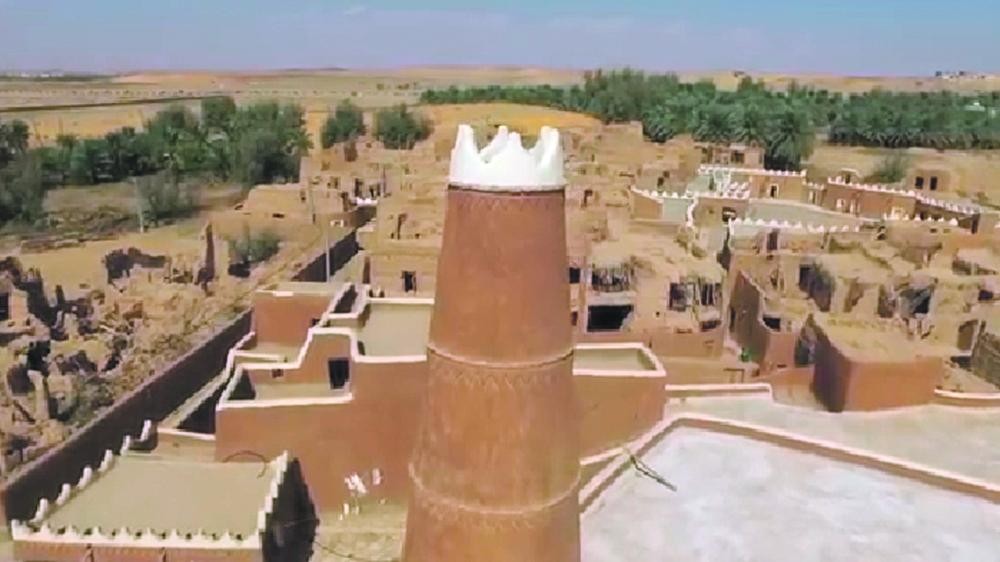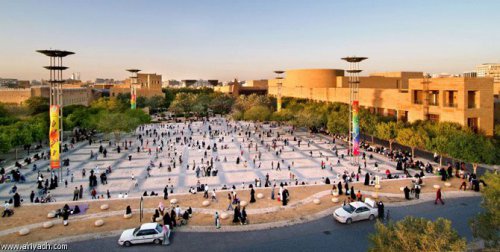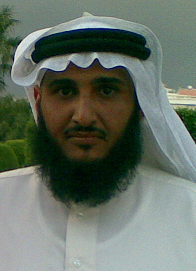Oyoon Al-Jiwa
on- 2021-12-07 13:48:31
- 0
- 3083

Oyoon Al-Jiwa governorate has a distinctive rank in Qassim Province for it has a long historical legacy that still exists till today. It is part of Al-Jiwa region that has a historical importance amongst the Arabian Peninsula’s towns. There are Arabian tribes that settled in Oyoon Al-Jiwa before Islam such as Abs tribe, which the famous Arabian night and poet, Antarah ibn Shaddad, belongs to. Oyoon Al-Jiwa was mentioned by lots of old poets in their poems, like Emrou Al-Qais, Zuhair bin Abi Salma, Antarah ibn Shaddad. Also, Oyoon Al-Jiwa had witnessed a lot of battles such as Dahis and Al-Qabra war that lasted for forty years between Abs and Dhubyan tribes.
Naming:
It was named Oyoon (Arabic for water ponds) after the many water ponds found in the area and the abundance of water during the Jahiliyah (Pre-Islamic) and Islamic Eras, making it a major stop along the Basra-Hajj route.
History:
Oyoon Aljiwa has old architecture stemming from remnants of Jahiliyah especially the ancient wells scattered across nearby mountains. Apparently maintenance of these wells continued since it was a stop along the hajj route. Given its centered location, it became a key town to surrounding areas. In ancient times it was surrounded with a wall with fortified towers and had a popular souk frequented by merchants and craftspeople during seasons of increased visits by Bedouins.
Oyoon Al-Jiwa Antiquities
The Old Town
It is a great model of Najd old towns. A big part of this Old Town still exists as it was before. It contains beautiful buildings and narrow zigzag alleys, some of which are roofed. The Old Town is consisted of a number of residential districts such as: Al-Lahayeg, Al-Bilad, Al-Malikah, Al-Hiyalah, Harshan, Al-Safa, Awjan, Al-Manarah, Al-Mo’allaq.
The houses of the Old Town were built of mud, which was brought from a place called (Al-Matyanah) and mixed with hay to form sunbaked bricks. Then, stones were added to the house bases so as to be strong and tolerate construction. At that time, the contractor was keen to add beautiful touches to some houses. Therefore, he built porches onto the house entrance and added beautiful gypsum decorations to the facades.
The houses’ doors and windows were either made of palm tree trunks, rush wood, or both. They were usually decorated with distinctive drawings and colors. Most of the Old Town houses comprise a guest room called (Al-Gahwah), bedrooms, a living room called (Al-Qubbah), a kitchen, a room for storing foods called (Saffah), and a small yard called (Al-Liwan).
The guest room (Al-Gahwah) was considered the most important part of the house. Therefore, the house owner was keen on increasing its area, compared with other rooms, and adding distinguished gypsum decorations.
The Old Mosque:
It was distinguished for its great architecture and beautiful interior design. It has a large area, high ceiling, pillars that were built in a fascinating architectural shape. In one of its sides, there is a beautiful high circular minaret. It is considered important for being very old building; no one of the elderly remembers when it was built. It was restored in 1328H, and it was renovated again in 1371H. It contains a large number of pillars with gypsum-decorated arches, adding aesthetic features to the Old Mosque.
Al-Katateeb:
A small extension to the mosque where young pupils received basic education such as Quran, and the fundamentals of reading and writing. It is directly adjoining to the Old Mosque from the qibla side.
It is divided into two sections: an inner ceiled section that has a terrace for sitting (called Habous) and a small yard attached to it. Sometimes, an area roofed with palm tree fronds is added to it when the number of students increases.
Oyoon Al-Jiwa has a number male and female teachers, who choose the location for teaching, either the teacher’s house, a public place, or the mosque. The teacher is usually fully dedicated to teaching, and he/she gets rewards from the students’ families depending on the standard of living of each family. Also, the teacher gets rewards during famous occasions or when the student memorizes the Holy Qur’an partially or completely.
If the student was perfect in reciting the Holy Qur’an, the teacher shall set out a day to announce the recitation of the whole Qur’an. Hence, in the morning, this student shall wear the most beautiful clothes, and the teacher shall give him the supplication to read it after finishing the whole Qur’an recitation, and his friends shall walk behind him in a respectful parade from the school to till his house. The student’s family will receive them with delight and prepare foods for them if it has a high standard of living. Also, they might stand at the student’s house door to be given dried pumpkin seeds or Sikkeri dates by being thrown from the roof. This way is called “Al-Bithath”. Also, the teacher might be given nice clothes especially if the student’s father was travelling a lot among Al-Oqailat trading trips.
The Old Market (Al-Majlis):
It was an old traditional market located near the Old Mosque. It was built in the old Islamic market pattern. It is surrounded by shops from all sides. There are about 50 shops, most of which are roofed with palm tree fronds. Before, it was used to have a major commercial activity since it served Qassim northern and western towns. It was headed by merchants to sell their products, including dairies, ghee, and cattle, as well as the artisans, carpenters, blacksmiths, bead makers, and cloth sellers.
The Old School:
An actual model of the beginnings of formal education with classes, desks and old records. It was established in 1369H. Many of its teachers had hold high-ranking jobs in the country and they gained high certificates from inside and outside the Kingdom.
Heritage Farm:
An old farm with an ancient machine used to extract water from the well and distribute it via canals to traditionally irrigate various plants.
Al-Margab:
It is an archeological tower located in the southeast side of Oyoon Al-Jiwa. It is circular in shape, and it is consisted of several floors. Many parts of the tower were collapsed and only 10 m. of its height has remained. It was used to monitor the city and its vicinity. It was restored several times in 1100H, about 300 years ago, and it was renovated again lately to be a prominent landmark in Oyoon Al-Jiwa. Through this tower, the visitor can see all sides of Oyoon Al-Jiwa as well as the nearby towns.
Old Wells:
Oyoon Al-Jiwa has tens of wells built of stones. They are very old wells. Their ownership is transferred from one farm owner into another including their farms. Usually, the farm owner finds out a well that was either buried by purpose or abandoned due to sand drift.
Al-Mashagig (water channels):
Each group of the old wells is connected to each other by underground channels called (Al-Mashagig). Such channels were used to increase water in the wells if there is a lack of water in the other ones. Such channels run under the houses. Sometimes, the channels’ roofs collapse just like what had happened under the big mosque and lots of houses in 1388H. Some of these channels (Al-Mashagig) are still open and they can be observed starting from the wells themselves or the nearby houses. The water can be got out of the wells by camels used for irrigation by waterwheel-like device, which is a well-known way amongst Qassim locals.
By: sulaiman mohammad alsalman





